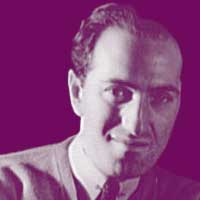George Gershwin Biography - A Very Quick Guide
Artist:
George Gershwin
Born:
September 26, 1898, Brooklyn, New York
Died:
July 11, 1937, Hollywood
George Gershwin (September 26, 1898 – July 11, 1937) was an American composer, born Jacob Gershowitz in Brooklyn to Russian-Jewish immigrant parents. He worked closely with his lyricist brother Ira Gershwin, writing for Broadway, Hollywood and the classical concert hall. Many of his songs became jazz standards and have been recorded by artists such as Ella Fitzgerald and Herbie Hancock.
Biography
The Gershwins acquired a piano in 1910 for Ira’s lessons, but George immediately took to the instrument, first playing by ear and then studying seriously with Charles Hambitzer, who introduced him to classical repertoire and orchestral music. Gershwin later studied harmony and composition with Rubin Goldmark. His novelty rag Rialto Ripples (1916) was his first commercial success, followed by the hit song Swanee (1918).
Throughout the 1920s, George and Ira produced a series of successful musicals, including Lady Be Good (1924), Oh, Kay! (1926), Funny Face (1927), Strike Up the Band (1927/1930), Girl Crazy (1930), and Of Thee I Sing (1931), the first musical to win a Pulitzer Prize. Gershwin died in Hollywood in 1937 while working on The Goldwyn Follies, the result of a brain tumour.
Gershwin had a long relationship with composer Kay Swift, who later arranged and edited some of his music. The Gershwin estate has continued to receive significant royalties and played an active role in U.S. copyright-term debates.
Musical style and influence
Gershwin’s style blended jazz, popular song and classical techniques. He was strongly influenced by early 20th-century French composers; during a meeting with Maurice Ravel, Gershwin asked for lessons, prompting Ravel’s famous reply: “Why be a second-rate Ravel when you can be a first-rate Gershwin?” His orchestral works show clear affinities with Ravel and Debussy, and Concerto in F drew comparisons with French Impressionism.
He was also curious about contemporary European modernism, studying with Joseph Schillinger in the 1930s. Although Schillinger influenced Gershwin’s working methods, claims that he shaped Porgy and Bess directly were disputed by Ira Gershwin. Porgy and Bess remains Gershwin’s most ambitious work, combining classical forms with African American musical idioms in a way that remains distinctively his own.
Biography
The Gershwins acquired a piano in 1910 for Ira’s lessons, but George immediately took to the instrument, first playing by ear and then studying seriously with Charles Hambitzer, who introduced him to classical repertoire and orchestral music. Gershwin later studied harmony and composition with Rubin Goldmark. His novelty rag Rialto Ripples (1916) was his first commercial success, followed by the hit song Swanee (1918).
Throughout the 1920s, George and Ira produced a series of successful musicals, including Lady Be Good (1924), Oh, Kay! (1926), Funny Face (1927), Strike Up the Band (1927/1930), Girl Crazy (1930), and Of Thee I Sing (1931), the first musical to win a Pulitzer Prize. Gershwin died in Hollywood in 1937 while working on The Goldwyn Follies, the result of a brain tumour.
Gershwin had a long relationship with composer Kay Swift, who later arranged and edited some of his music. The Gershwin estate has continued to receive significant royalties and played an active role in U.S. copyright-term debates.
Musical style and influence
Gershwin’s style blended jazz, popular song and classical techniques. He was strongly influenced by early 20th-century French composers; during a meeting with Maurice Ravel, Gershwin asked for lessons, prompting Ravel’s famous reply: “Why be a second-rate Ravel when you can be a first-rate Gershwin?” His orchestral works show clear affinities with Ravel and Debussy, and Concerto in F drew comparisons with French Impressionism.
He was also curious about contemporary European modernism, studying with Joseph Schillinger in the 1930s. Although Schillinger influenced Gershwin’s working methods, claims that he shaped Porgy and Bess directly were disputed by Ira Gershwin. Porgy and Bess remains Gershwin’s most ambitious work, combining classical forms with African American musical idioms in a way that remains distinctively his own.
Top Pieces on 8notes by George Gershwin
